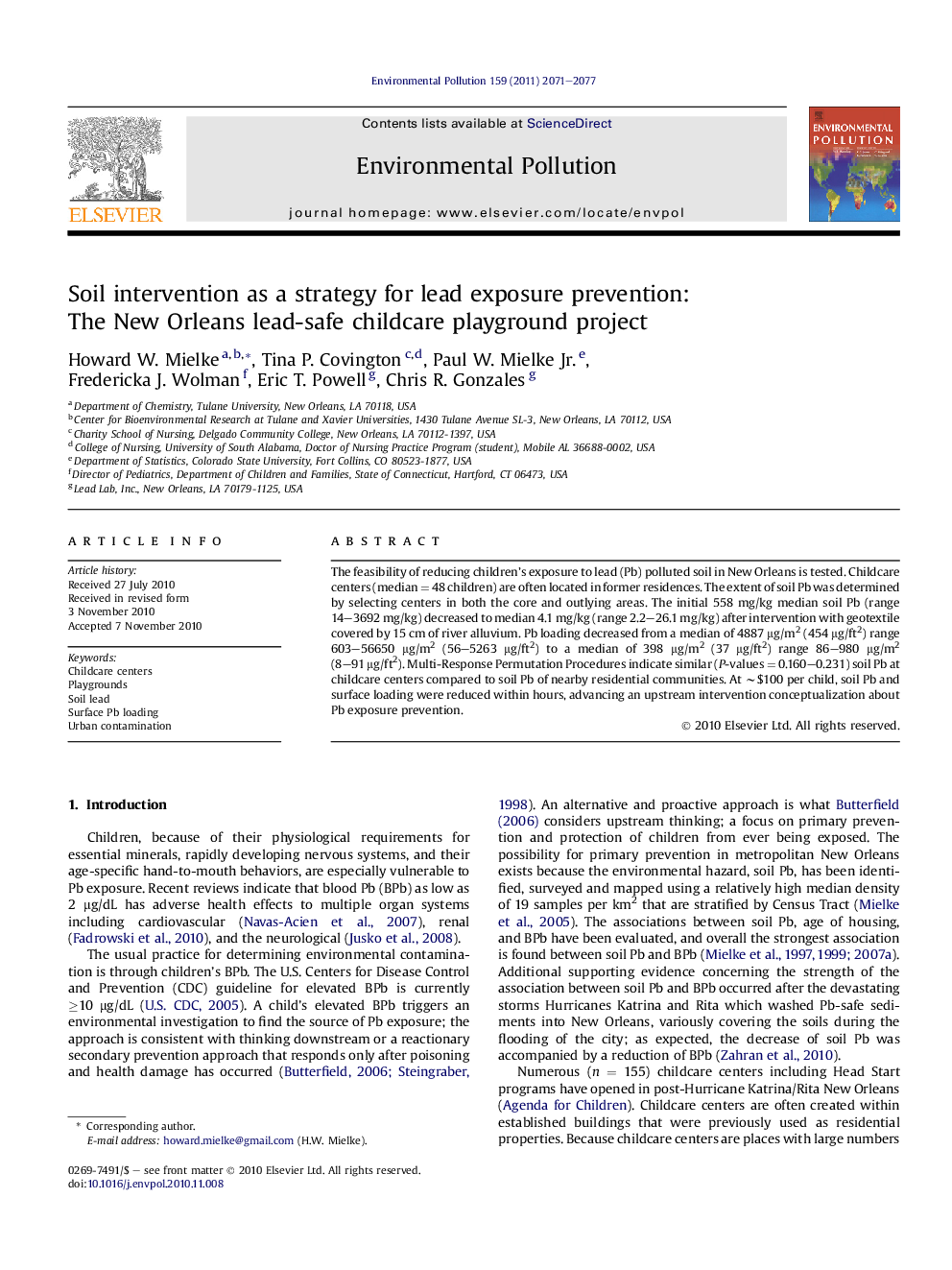| Article ID | Journal | Published Year | Pages | File Type |
|---|---|---|---|---|
| 4425200 | Environmental Pollution | 2011 | 7 Pages |
The feasibility of reducing children’s exposure to lead (Pb) polluted soil in New Orleans is tested. Childcare centers (median = 48 children) are often located in former residences. The extent of soil Pb was determined by selecting centers in both the core and outlying areas. The initial 558 mg/kg median soil Pb (range 14–3692 mg/kg) decreased to median 4.1 mg/kg (range 2.2–26.1 mg/kg) after intervention with geotextile covered by 15 cm of river alluvium. Pb loading decreased from a median of 4887 μg/m2 (454 μg/ft2) range 603–56650 μg/m2 (56–5263 μg/ft2) to a median of 398 μg/m2 (37 μg/ft2) range 86–980 μg/m2 (8–91 μg/ft2). Multi-Response Permutation Procedures indicate similar (P-values = 0.160–0.231) soil Pb at childcare centers compared to soil Pb of nearby residential communities. At ∼$100 per child, soil Pb and surface loading were reduced within hours, advancing an upstream intervention conceptualization about Pb exposure prevention.
► Upstream thinking refers to attending to causative agents that affect outcomes. ► New Orleans has a high density soil Pb map of all residential communities. ► Many childcare centers are located in Pb polluted residential communities. ► Evaluation of childcare center playground soils substantiated severe Pb pollution. ► Pursuing upstream thinking, low Pb soil was put on playgrounds to protect children.
